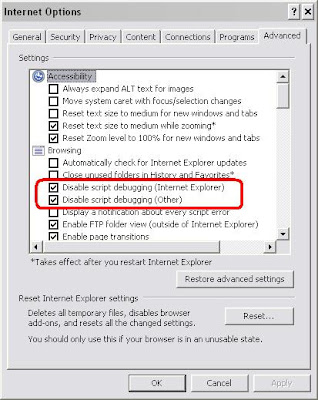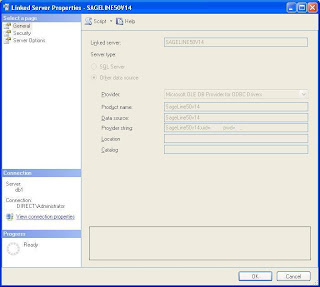
A glimpse of the future of human-computer interaction.
For more information see: Oblong.com
Business Software Solutions across all of Dorset and the world
Avinash Kaushik comes highly recommended for web analytics, plus he seems to be an ok person! 8-)
"BigThing" : a BigThing is a thing which is big.
ENQUIRER:
Dear, Dorset Software Consultant,
On my laptop (only,not my PC) I am getting a lot of annoying dialog boxes that pop up and say there is a runtime error and do I want to debug. ["Do you want to debug?"] If I say yes, the script editor from Microsoft pops up, but I don't know what I am doing with it so I always wind up closing it. How do I get these things to leave me alone?

ENQUIRER:
I think I am getting clearer about when this happens. I think it is related to the fact that I just close my laptop when it is plugged in, don't shut down, and then unplug the laptop from the wall later, either use it on battery, or plug it in somewhere else and use it on AC. I have been wondering for awhile: When I go to shut down in Microsoft, when should I select Standby, when should I select Hibernate (I think this has to do with not running down the battery, so I'm guessing you'll say that), or Turn off (or Restart) completely?
I want to know which I should choose of the first three when I am unplugging from the wall and moving the laptop somewhere else.





Dear Dorset Software Consutants,
I will be setting up a blog later this summer and I'd love to hear some of your experiences with blogging.
I'm really after a number of bits of information. For a start what service would you recommend?
Who reads your blog? Is it public or private? How do I relate my blog to my business or other projects I am working on?
Many thanks for any help you can give me.








/****** Object: LinkedServer [SAGE_Linked_Server] Script Date: 06/22/2008 20:56:02 ******/
EXEC master.dbo.sp_addlinkedserver @server = N'SAGE_Linked_Server', @srvproduct=N'SageLine50v14', @provider=N'MSDASQL', @datasrc=N'SageLine50v14', @provstr=N'SageLine50v14;uid=FillinTheBlank;pwd=FillinTheBlank;'
GO
EXEC master.dbo.sp_serveroption @server=N'SAGE_Linked_Server', @optname=N'collation compatible', @optvalue=N'true'
GO
EXEC master.dbo.sp_serveroption @server=N'SAGE_Linked_Server', @optname=N'data access', @optvalue=N'true'
GO
EXEC master.dbo.sp_serveroption @server=N'SAGE_Linked_Server', @optname=N'dist', @optvalue=N'false'
GO
EXEC master.dbo.sp_serveroption @server=N'SAGE_Linked_Server', @optname=N'pub', @optvalue=N'false'
GO
EXEC master.dbo.sp_serveroption @server=N'SAGE_Linked_Server', @optname=N'rpc', @optvalue=N'true'
GO
EXEC master.dbo.sp_serveroption @server=N'SAGE_Linked_Server', @optname=N'rpc out', @optvalue=N'true'
GO
EXEC master.dbo.sp_serveroption @server=N'SAGE_Linked_Server', @optname=N'sub', @optvalue=N'false'
GO
EXEC master.dbo.sp_serveroption @server=N'SAGE_Linked_Server', @optname=N'connect timeout', @optvalue=N'0'
GO
EXEC master.dbo.sp_serveroption @server=N'SAGE_Linked_Server', @optname=N'collation name', @optvalue=null
GO
EXEC master.dbo.sp_serveroption @server=N'SAGE_Linked_Server', @optname=N'lazy schema validation', @optvalue=N'false'
GO
EXEC master.dbo.sp_serveroption @server=N'SAGE_Linked_Server', @optname=N'query timeout', @optvalue=N'0'
GO
EXEC master.dbo.sp_serveroption @server=N'SAGE_Linked_Server', @optname=N'use remote collation', @optvalue=N'true'